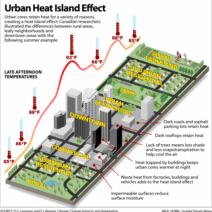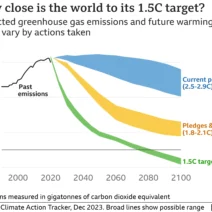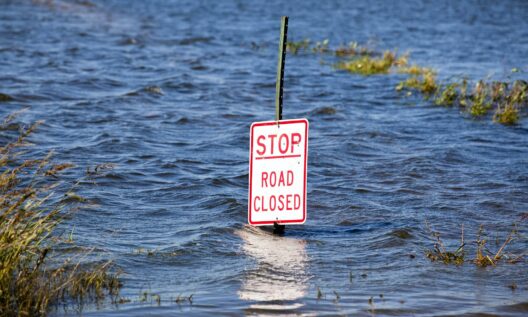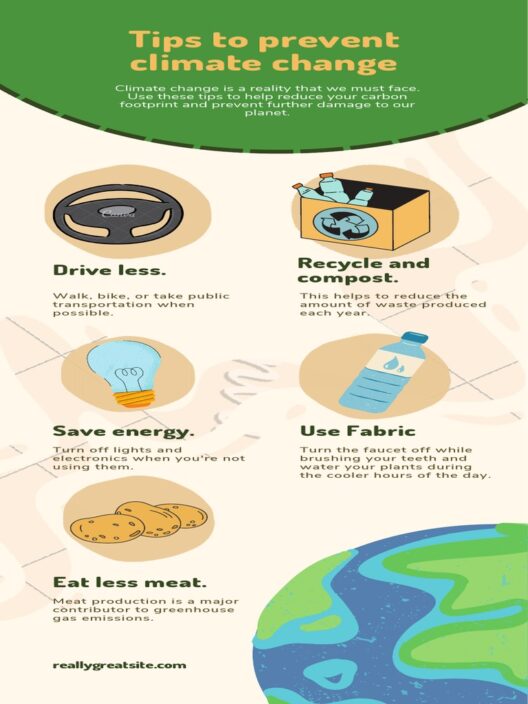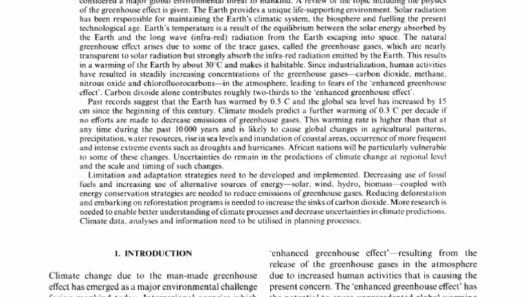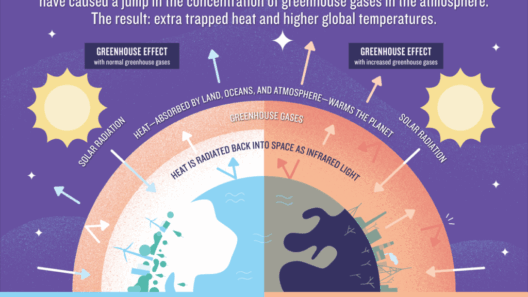The intensification of the greenhouse effect is a pressing concern that warrants a comprehensive examination. This phenomenon, driven by various anthropogenic and natural factors, has far-reaching implications for our climate, ecosystems, and ultimately, human existence. Understanding the key elements behind this intensification is crucial for developing effective strategies to combat climate change.
Greenhouse gases are vital players in this narrative. They serve a necessary role in maintaining Earth’s temperature by trapping heat. However, the indiscriminate release of these gases into the atmosphere has exacerbated their concentrations, leading to a more pronounced greenhouse effect. To grasp the situation fully, it is important to dissect the primary contributors to this alarming escalation.
One key factor is industrialization. The ascent of industrial technology has revolutionized economies globally but has also led to a surge in greenhouse gas emissions. Factories and power plants, in their relentless pursuit of efficiency and productivity, burn fossil fuels in colossal quantities. This combustion process releases carbon dioxide (CO2) and other pollutants into the air, significantly elevating their levels. As industry expands, so does its carbon footprint, which contributes directly to a warming planet.
Transportation is another major contributor to the intensification of the greenhouse effect. Vehicles powered by fossil fuels are ubiquitous in urban centers. Cars, buses, trucks, and airplanes emit substantial amounts of CO2 and nitrous oxide, particularly in regions where public transportation options are limited. The growing demand for mobility, coupled with population surges in urban areas, has led to a surge in transport emissions. Eager for convenience, individuals often overlook the environmental ramifications, perpetuating a cycle of reliance on fossil fuels.
Deforestation is an additional critical factor in the intensification of the greenhouse effect. Forests play a vital role in sequestering carbon dioxide, absorbing it from the atmosphere and mitigating climate change. However, rampant deforestation for agriculture, urban development, and logging has diminished this natural carbon sink. The loss of trees not only releases stored carbon back into the atmosphere but also diminishes the planet’s capacity to absorb future emissions. This double-edged sword deepens the climate crisis, underscoring the urgent need for sustainable land management practices.
Agricultural practices, too, cannot be overlooked. Modern farming techniques, particularly those that rely heavily on chemical fertilizers, contribute significantly to greenhouse gas emissions. Nitrous oxide, a potent greenhouse gas, is emitted from synthetic fertilizers and livestock manure. Additionally, methane emissions from enteric fermentation in ruminants, like cows, add to the trove of greenhouse gases. As global populations rise, the demand for food increases, resulting in intensified agricultural practices that exacerbate the greenhouse effect.
The industrial revolution was also accompanied by an exponential rise in energy consumption. The dependency on fossil fuels as the primary energy source is still a prevalent issue today. Despite advances in renewable energy technologies, fossil fuels remain the backbone of global energy production. Transitioning to cleaner energy sources is vital, yet the inertia of existing infrastructures often impedes progress. As fossil fuel extraction and consumption continue at alarming rates, the cumulative impact on greenhouse gas concentrations becomes more pronounced.
Urbanization is a global phenomenon fueling the greenhouse effect. Cities, with their high energy demands and concentrations of human activity, are significant sources of emissions. Urban sprawl leads to increased transportation needs, greater energy consumption for heating, cooling, and lighting, and more waste generation. The synergy of these factors results in a marked increase in greenhouse gases released into the atmosphere. Strategies promoting sustainable urban design are crucial to alleviating these pressures and forging a more environmentally friendly future.
Natural climate variations also play a role. Events such as El Niño and La Niña can lead to temporary shifts in climate patterns, influencing both weather and greenhouse gas emissions. However, these events are becoming increasingly intertwined with human-induced climate change, amplifying their effects. The intersection of natural and anthropogenic factors complicates efforts to predict and mitigate climate change, presenting further challenges to those seeking actionable solutions.
Additionally, the interplay between climate change and feedback loops presents a significant threat. For instance, as polar ice caps melt, not only is ice lost—reflecting less sunlight—but more dark ocean water is exposed, leading to increased absorption of heat. Similarly, thawing permafrost releases previously trapped methane, resulting in a vicious cycle that accelerates warming. Understanding these feedback mechanisms is essential for developing comprehensive climate policies.
The impact of climate change is not uniform; it varies geographically and demographically. Vulnerable communities, often least responsible for greenhouse gas emissions, bear the brunt of climate-related impacts. Grassroots movements advocating for environmental justice highlight these disparities, emphasizing that effective solutions must be equitable and inclusive. Addressing the climate crisis requires a holistic approach that considers social, economic, and environmental factors.
In conclusion, the intensification of the greenhouse effect stems from a complex interplay of human activities and natural phenomena. Factors such as industrialization, transportation, deforestation, agriculture, energy consumption, urbanization, and natural variability create a formidable challenge. A multifaceted and collaborative approach is essential for mitigating climate change. By understanding these factors in detail, society can work towards sustainable solutions that protect the planet for future generations. The time for action is now; acknowledging the depth of this crisis is the first step toward forging a more sustainable and equitable future.
